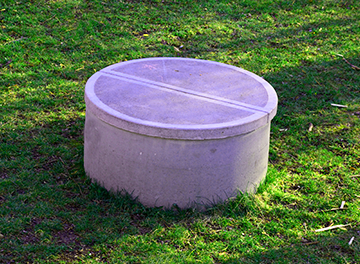Epidemiology: Occupational and Environmental
Private Wells: Facts and Figures

An estimated 15% of Americans, or about 45 million people, get their water from private groundwater wells. About 2.4 million North Carolinians rely on groundwater as their primary drinking water source. Public water systems serving at least 25 persons or having 15 service connections must meet legal standards set by the Safe Drinking Water Act and the National Primary Drinking Water Regulations. However, there is no mandated oversight of private well water quality; it is the responsibility of the homeowner to monitor the quality of their private well water. Despite the large number of private wells in North Carolina, fewer than 200,000 were tested for contaminants in the last decade (2000-2010).
- Browse groundwater contamination maps by contaminant name (1998-2010)
- Browse SLPH contaminant averages for each county (1998-2010)
- See the EPA's list of hazardous waste sites in North Carolina targeted for cleanup through Superfund
Since 2008 all newly constructed drinking water wells in North Carolina must be tested for bacterial and chemical contaminants within 30 days of the well completion; however, there are no other required tests for private wells in North Carolina.
Through a collaborative project between the University of North Carolina at Chapel Hill's Superfund Research Program and the North Carolina Department of Health and Human Services, Division of Public Health, advanced mapping techniques and more than a decade's-worth of test results from the State Laboratory of Public Health were combined to show the distribution of private well water contaminants across the state.
Private Wells Pages
Related OEEB Programs
- Chemical Preparedness and Response Surveillance (ChPRS) Program
- Health Assessment, Consultation and Education Program
- Medical Evaluation and Risk Assessment Program
Additional Resources
Last Modified: November 17, 2021
